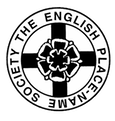Lodore
Early-attested site in the Parish of Borrowdale
Historical Forms
- Laghedure 1209–10,1211 Furness 1211 Fountains c.1210–12 Scotland
- Lawdoore, Lawdowre, Lawdure 1567 PR(Crosth) 1615 Derwent
- Lowdore 1601 PR(Crosth) 1784 West
- Lodore 1789 Clarke
- Lowdore waterfall 1769 Gray
- Heghedure 1209–10 Furness
- Hie Dore 1588 PR(Crosth)
Etymology
Lodore is so called in contrast to Heghedure 1209–10 Furness, Hie Dore 1588 PR (Crosth), probably the present High Lodore. Their relative positions were further emphasised in the name Low-low -Door , said in Clarke's Survey of the Lakes (74) to be used locally of Lodore itself. The name seems to be a hybrid compound, consisting of ON lágr, 'low,' and OE duru , 'door.' The dure is the 'door' or gap through which Watendlath Beck makes its way. According to Clarke (op. cit .), “these houses [High and Low] are not improperly called Low -Doors for between them is an opening into Borrowdale which is almost shut up between the rock and water at the place now called Great Inin.”
Places in the same Parish
Early-attested site
- Watendlath
- Greenup Edge
- Long Strath
- High Scawdel
- Seathwaite
- Seatoller
- Stockley Bridge
- Stonethwaite
- Sty Head
- Ashness
- Brown Dodd
- Burthwaite Bridge
- Glaramara
- Grange
- Tongue Head
Other OS name
- Eagle Crag
- Reecastle Crag
- Lodore Cascade
- Base Brown
- Longthwaite
- Riggside
- Rosthwaite
- Shepherds Crag
- Shivery Knott
- Stake
- High Tove
- Seatoller Fell
- Sty Head Pass
- Dovenest Crag
- Manesty
- Borrowdale Fells
- Grange Crags
- Birch How
- Bowder Stone
- Bull Crag
- Capell Crag
- Castle Crag
- Chapel Ho
- Ellers
- Field Ho
- Goat Crags
- Great End
- Hanging Knotts
- High Seat
- Hind Side
- Hollows
- Hollow Stone
- How
- Leathes Cottage
